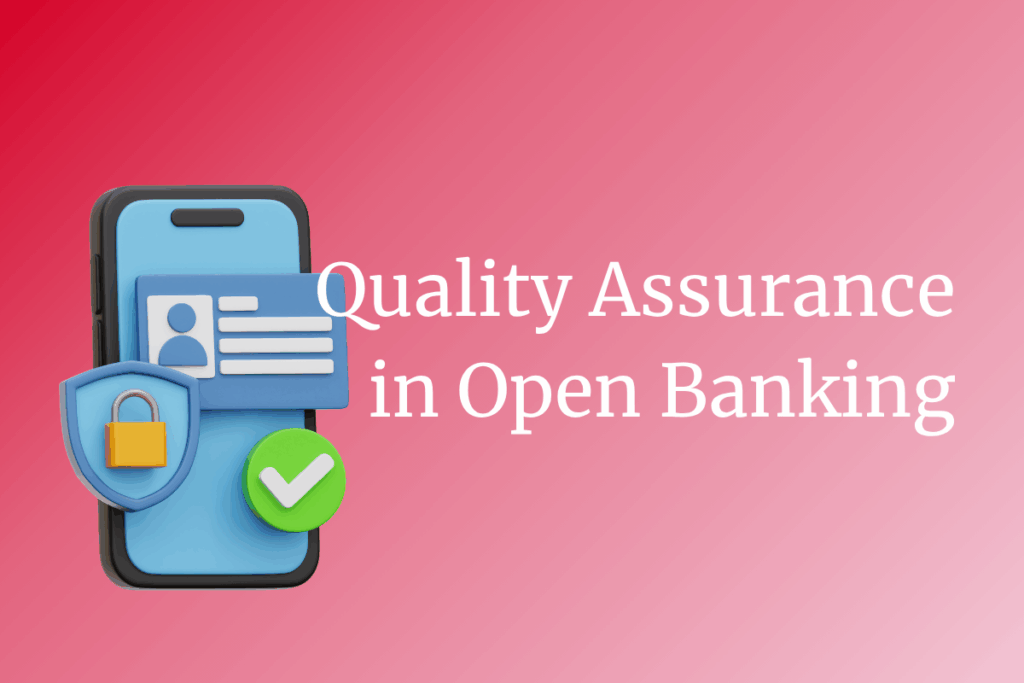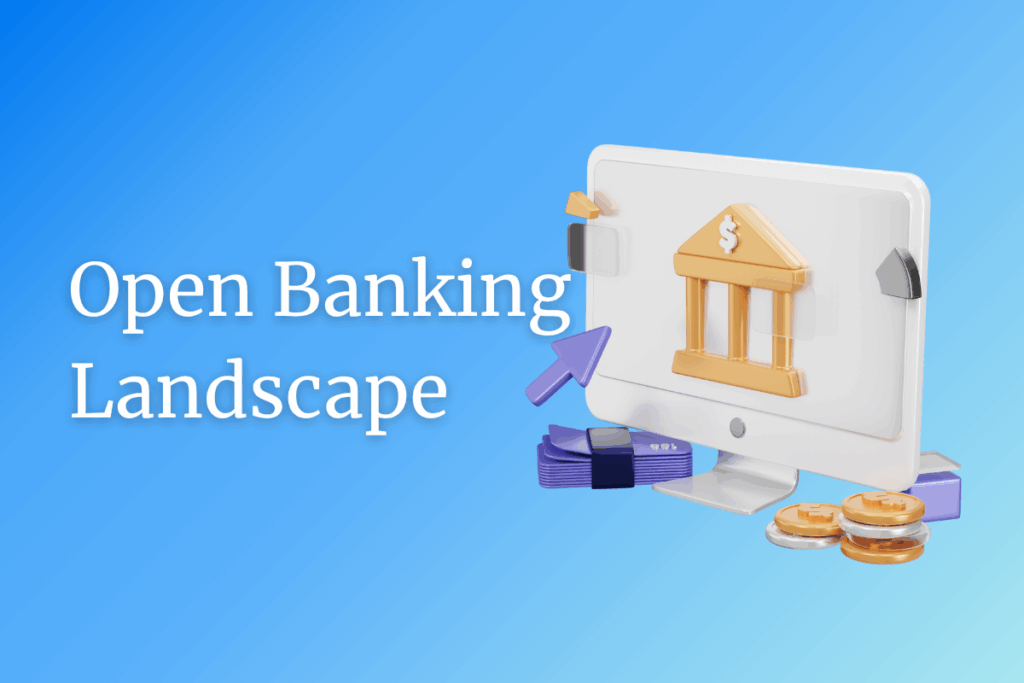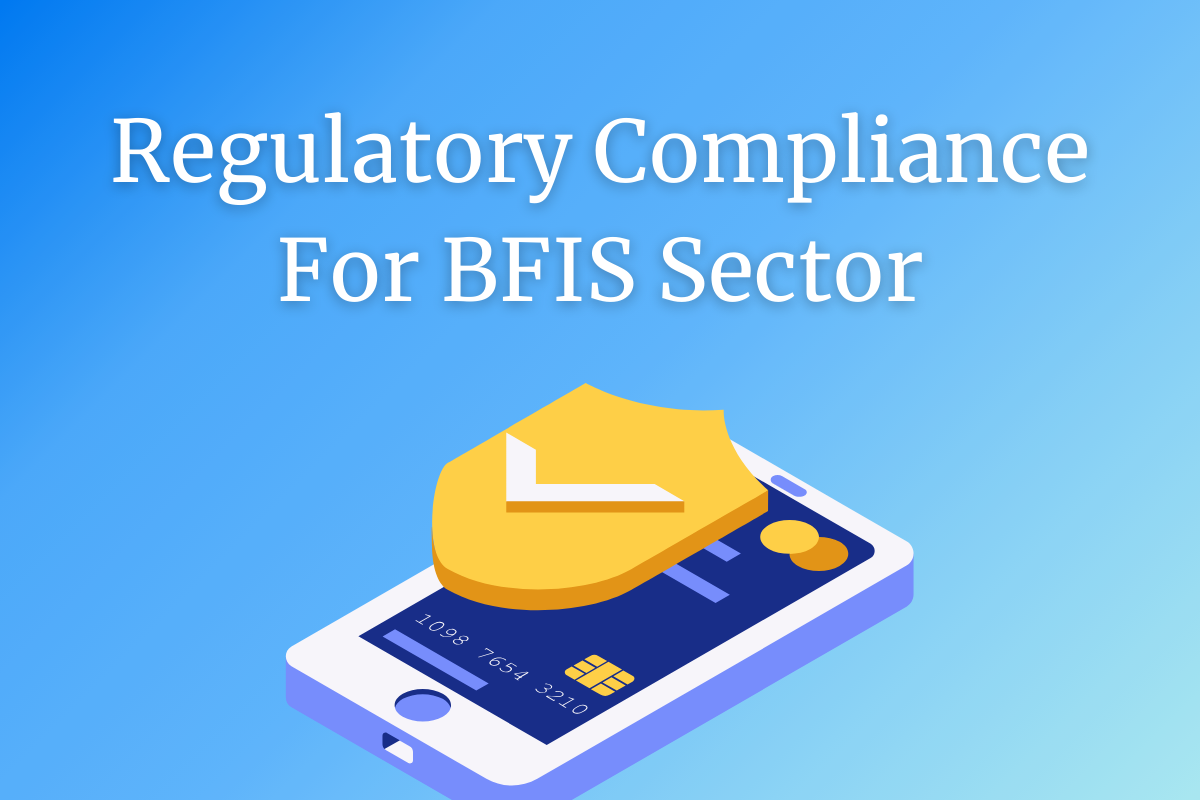Picture this: A customer’s mortgage application gets automatically declined because a quality assurance gap allows incorrect income data to flow between their banking app and the lender’s system. Or imagine millions of payment transactions grinding to a halt because inadequate load testing failed to catch a performance bottleneck during the peak shopping season.
In the interconnected world of open banking, where financial data flows seamlessly between banks, fintech startups, and third-party providers, a single quality assurance oversight can cascade into system-wide failures that shake consumer confidence and trigger regulatory scrutiny. Here, QA professionals don’t just ensure software works; they safeguard the integrity of entire financial networks that millions of consumers and businesses depend on daily.
Impact of Quality Assurance on Fintech Innovation
Quality assurance (QA) plays a pivotal role in driving innovation within the fintech sector by ensuring that financial applications are secure, reliable, and user-friendly. As fintech companies continue to evolve, integrating emerging technologies such as artificial intelligence (AI) and blockchain necessitates an agile and adaptive QA approach. This ongoing evolution in QA practices is crucial for maintaining a competitive advantage and delivering exceptional software solutions that meet customer expectations.
Enhancing User Experience and Trust
In the highly competitive fintech market, the quality of applications can significantly differentiate a company from its rivals. A robust QA strategy focuses on providing error-free functionality, high performance, and infallible security, which are critical for building user trust and enhancing overall customer satisfaction. Fintech firms must adopt a customer-centric QA approach, addressing industry-specific challenges while ensuring compliance with regulatory standards. This comprehensive quality management improves user experiences and fosters long-term customer loyalty.
Continuous Testing and Adaptation
The future of quality assurance in fintech is increasingly characterized by continuous testing and integration within the software development lifecycle. By implementing QA throughout all stages of product development, companies can achieve quicker time-to-market and lower costs associated with quality management. This proactive approach enhances regulatory compliance and allows fintech organizations to adapt swiftly to changing market demands and technological advancements, ultimately driving innovation and efficiency.
Building Trust Through Data Quality Management
Trust is the cornerstone of financial relationships, especially within the context of open banking. As customers become more aware of their data rights and the associated risks of sharing personal information, the perceived quality of data management becomes paramount. Institutions that prioritize data quality through stringent QA processes can enhance customer trust and engagement, encouraging users to adopt open banking solutions. By demonstrating a commitment to data integrity, fintech companies can create sustainable competitive advantages in the evolving financial landscape.
Regulatory Compliance as an Innovation Driver
Regulatory compliance is not merely a legal obligation for fintech companies; it catalyzes innovation. A well-structured compliance framework, supported by effective QA practices, helps firms identify and mitigate potential risks. By adhering to anti-money laundering (AML) laws and data protection regulations, fintech organizations can enhance their cybersecurity measures, fostering greater trust with customers and banks alike. Moreover, viewing compliance as an opportunity rather than a burden can lead to innovative solutions that drive business growth and improve service delivery.
Quality Assurance in Open Banking
Risk-Based Testing
A risk-based approach to testing prioritizes the most critical components of banking applications, allowing QA teams to allocate resources efficiently and focus on high-impact areas. This method identifies potential vulnerabilities and facilitates compliance monitoring, ensuring that financial institutions adhere to regulatory requirements while preventing compliance issues before they affect end-users.
API Testing
Quality assurance for these APIs requires sophisticated testing strategies that go far beyond simple functional validation. Comprehensive API testing in open banking environments must validate data accuracy, response times, error handling, and security protocols simultaneously.
QA teams need to simulate various scenarios, including network latencies, partial system failures, and malformed data requests, to ensure APIs respond appropriately under all conditions. This includes testing rate-limiting mechanisms that prevent system abuse while ensuring legitimate traffic flows unimpeded.
Contract testing becomes particularly crucial in open banking scenarios, where multiple organizations must agree on data formats, authentication methods, and error-handling procedures. QA teams must validate that APIs conform to industry standards while remaining flexible enough to accommodate different implementation approaches across various financial institutions.
Performance testing for open banking APIs requires understanding not just individual endpoint performance but how the entire API ecosystem behaves under load. This includes testing scenarios where multiple third-party providers access the same banking APIs simultaneously, ensuring system performance remains stable even during peak usage.
Security Testing
Financial data represents some of the most sensitive information in the digital world, making security testing paramount in open banking quality assurance. QA teams must validate multiple layers of security simultaneously, from encryption protocols and authentication mechanisms to access controls and audit logging systems.
Penetration testing in open banking environments requires specialized knowledge of financial industry attack vectors and regulatory compliance requirements. QA professionals must simulate sophisticated cyber attacks while ensuring that security measures don’t compromise system usability or performance. This includes testing for common vulnerabilities like SQL injection, cross-site scripting, man-in-the-middle attacks, and more sophisticated threats specific to financial services.
Authentication testing becomes particularly complex in open banking scenarios, where multiple parties must securely verify customer identities. QA teams must validate multi-factor authentication systems, biometric verification processes, and single sign-on implementations while ensuring that security measures remain user-friendly and accessible.
Data encryption testing must verify that sensitive information remains protected throughout its entire journey across the open banking ecosystem. This includes testing encryption at rest, in transit, and during processing while ensuring that different encryption standards used by various providers remain compatible and secure.
Compliance Testing: Navigating the Regulatory Maze
Open banking operates within a complex web of regulatory requirements varying significantly across jurisdictions. Quality assurance teams must ensure that systems comply with multiple regulatory frameworks simultaneously, from data protection laws like GDPR to financial services regulations specific to each market.
Consent management testing represents a critical component of regulatory compliance, requiring validation that customers can easily understand, grant, modify, and revoke permissions for data sharing. QA teams must test various consent scenarios, including partial consent, time-limited access, and granular permission controls while ensuring these processes remain legally compliant and user-friendly.
Audit trail testing ensures that all system activities are properly logged and available for regulatory review. QA professionals must validate that audit logs capture all necessary information without compromising system performance while ensuring that log data remains tamper-proof and accessible to authorized parties.
Data retention and deletion testing become particularly important in open banking environments where customer data may be stored across multiple systems operated by different organizations. QA teams must validate that data lifecycle management processes work correctly across the entire ecosystem, ensuring customer data is deleted appropriately when required by regulation or customer request.
Performance and Scalability: Building for Growth
Open banking systems must handle millions of transactions while maintaining sub-second response times and near-perfect availability.
Performance testing in these environments requires understanding individual system capabilities and how performance scales across the entire ecosystem as transaction volumes grow.
Load testing must simulate realistic usage patterns that reflect the complex interactions between different system components. This includes testing scenarios where multiple fintech applications simultaneously access banking APIs, batch processing systems operate alongside real-time transaction processing and system load varies dramatically based on time of day, market events, or seasonal patterns.
Scalability testing becomes particularly challenging when systems span multiple cloud providers and geographic regions. QA teams must validate that systems can scale efficiently while maintaining data consistency and regulatory compliance across jurisdictions and technical environments.
Disaster recovery testing ensures that open banking systems can continue operating even when individual components fail. This includes testing failover procedures, data backup and recovery processes, and business continuity plans that span multiple organizations and technical platforms.
Data Quality and Integrity: The Foundation of Trust
In open banking ecosystems, data quality issues can propagate across multiple systems, potentially affecting thousands of customers and numerous financial institutions simultaneously. Quality assurance must ensure that financial data remains accurate, complete, and consistent throughout its journey across the ecosystem.
Data transformation testing validates that information is correctly converted between different formats and standards used by various system components. This includes testing currency conversions, date format standardization, and transaction categorization processes that may differ between financial institutions and fintech providers.
Data synchronization testing ensures that account balances, transaction histories, and customer information remain consistent across all systems that access this data. QA teams must test scenarios where data updates occur simultaneously across multiple systems, ensuring consistent consistency without compromising data accuracy.
Data lineage testing tracks how information flows through the open banking ecosystem, enabling QA teams to quickly identify the source of data quality issues and understand the potential impact of any problems. This becomes particularly important when troubleshooting issues that may affect multiple systems and organizations.
User Experience Testing Across Platforms
Open banking creates complex user journeys that span multiple applications and organizations, making user experience testing particularly challenging. Customers might begin a transaction in their banking app, complete authentication through a third-party provider, and finalize the process in a fintech application, requiring seamless integration across all touchpoints.
Cross-platform testing must validate that user experiences remain consistent and intuitive even when customers interact with multiple interfaces during a single transaction. This includes testing various device types, operating systems, and browser configurations to ensure broad compatibility.
Accessibility testing becomes particularly important in open banking environments where financial services must be available to users with various disabilities and technical capabilities. QA teams must ensure that accessibility features work correctly across all components of the customer journey, not just individual applications.
Error handling testing must validate that customers receive clear, actionable guidance when problems occur anywhere in the open banking ecosystem. This includes testing scenarios where errors originate in one system but must be communicated effectively through a different user interface.
Strategies for Implementing Quality Assurance
Shift-Left Approach
Incorporating Quality Assurance (QA) from the earliest stages of software development is essential in the fintech sector. Adopting a shift-left approach allows teams to identify compliance issues before they escalate into significant problems. By embedding QA practices in the initial phases, organizations can proactively address potential regulatory concerns and enhance the overall quality of the application.
Cross-Functional Collaboration
Fostering collaboration between development, QA, and legal teams is vital to align technical capabilities with regulatory requirements. By breaking down silos and promoting a culture of shared responsibility, organizations can ensure that all teams work towards a common goal of compliance and quality assurance. Regular communication and joint efforts in problem-solving will help streamline the development process and address compliance risks more effectively.
Regular Audits and Updates
Conducting periodic audits is crucial for maintaining ongoing compliance with evolving regulations. Fintech companies should establish a systematic process for internal audits and assessments to cover all aspects of regulatory compliance and risk management. This proactive measure allows organizations to adapt swiftly to changes in the regulatory landscape and ensure that their QA practices remain aligned with current standards.
Engaging QA Expertise
Partnering with experienced software quality assurance companies provides fintech organizations access to specialized knowledge of regulatory standards and best practices. These partnerships can facilitate the implementation of advanced tools and technologies, such as AI-driven testing frameworks, which can enhance compliance efforts and scalability in QA processes.
Continuous Monitoring and Real-Time QA
Open banking systems operate continuously, requiring quality assurance processes that extend beyond traditional pre-deployment testing into real-time monitoring and validation. QA teams must implement sophisticated monitoring systems that can detect quality issues as they occur in production environments.
Synthetic transaction testing involves running automated test scenarios continuously against production systems to validate that critical functions remain operational. This includes testing representative customer journeys end-to-end to ensure the entire ecosystem functions correctly.
Anomaly detection systems help identify quality issues before they impact large numbers of customers. QA teams must configure monitoring systems that distinguish between normal system behavior variations and genuine quality problems requiring immediate attention.
Performance monitoring must track system behavior across multiple dimensions simultaneously, including response times, error rates, throughput, and resource utilization. This comprehensive monitoring enables QA teams to identify potential issues before they escalate into customer-impacting problems.
DevOps Integration and Automation
The complexity and scale of open banking systems make manual testing approaches inadequate for ensuring comprehensive quality assurance. QA teams must integrate testing processes deeply into development and deployment pipelines, enabling continuous validation of system quality.
Test automation frameworks must handle the complexity of multi-system integration testing while remaining maintainable and reliable. This includes automating API contract testing, security validation, performance benchmarking, and compliance checking as integral parts of the development process.
Infrastructure as Code approaches enables QA teams to create consistent testing environments that accurately reflect production configurations. This becomes particularly important when testing systems that integrate with multiple external organizations, each with its own technical requirements and constraints.
Deployment testing must validate that system updates don’t introduce quality regressions while ensuring new features integrate correctly with existing ecosystem components. This includes testing rollback procedures and ensuring that partial deployments don’t compromise system integrity.
Educational Initiatives
Investing in education and training programs for stakeholders can help overcome resistance to adopting new QA methodologies such as DevOps and QA Automation. By raising awareness of the benefits of these approaches, organizations can cultivate a culture that values quality and compliance, ultimately leading to enhanced trust in fintech applications. By employing these strategies, fintech companies can effectively implement Quality Assurance in their operations, driving innovation while ensuring compliance in a rapidly evolving landscape.
Risk Management and Quality Governance
Quality assurance in open banking environments requires sophisticated risk management approaches that consider the potential impact of quality issues across multiple organizations and customer bases. QA teams must prioritize testing efforts based on risk assessments that consider technical and business factors.
Quality metrics must provide meaningful insights into system health across the entire open banking ecosystem, not just individual components. This includes tracking customer satisfaction, system availability, data accuracy, and regulatory compliance measures that reflect the overall quality of the integrated system.
Incident response procedures must coordinate quality assurance activities across multiple organizations when issues occur. QA teams need clear protocols for investigating problems that may span multiple systems and for implementing fixes that don’t introduce new quality risks.
Vendor quality management becomes crucial when working with third-party providers that integrate into the open banking ecosystem. QA teams must establish quality standards and validation procedures for external partners while maintaining overall system quality and compliance.
Future-Proofing QA for Open Banking Evolution
The open banking landscape continues to evolve rapidly, with new technologies, regulations, and business models constantly emerging. Quality assurance strategies must remain flexible and adaptable to handle future changes while maintaining current system quality.
Artificial intelligence and machine learning technologies offer new opportunities for enhancing quality assurance through predictive analytics, automated test generation, and intelligent monitoring systems. QA teams must explore these technologies while ensuring that AI-driven processes remain transparent and auditable for regulatory compliance.
Blockchain integration, real-time payments, and embedded finance represent emerging trends that will require new QA approaches and testing methodologies. Quality assurance teams must stay ahead of these trends while maintaining their expertise in current technologies and processes.
The international expansion of open banking creates new challenges for QA teams, as they must ensure system quality across multiple regulatory jurisdictions and cultural contexts. This requires developing testing approaches that can adapt to local requirements while maintaining global consistency.
Building Excellence in Open Banking QA
Success in open banking quality assurance requires a holistic approach that simultaneously considers technical excellence, regulatory compliance, user experience, and business objectives. QA teams must develop specialized expertise while maintaining a broad understanding of the entire financial services ecosystem.
Collaboration becomes essential, as QA professionals must work effectively with development teams, business stakeholders, regulatory experts, and external partners to ensure comprehensive quality coverage. This includes establishing clear communication channels and shared quality standards across organizational boundaries.
Continuous learning and adaptation remain crucial as the open banking landscape evolves. QA teams must invest in ongoing education and training while building flexible processes that can evolve with changing technology and regulatory requirements.
The future belongs to organizations that recognize quality assurance as a strategic enabler of open banking innovation rather than simply a technical necessity. By investing in comprehensive QA capabilities, financial institutions, and fintech companies can build the trust and reliability necessary to thrive in the interconnected world of open banking, transforming quality assurance from a cost center into a competitive advantage that drives customer satisfaction, regulatory compliance, and business growth.
How SHIFT ASIA Empowers Open Banking Success Through Expert Quality Assurance
Navigating the complex quality assurance landscape of open banking requires more than technical expertise; it demands a deep understanding of financial services, regulatory compliance, and the unique challenges of ecosystem integration. SHIFT ASIA brings specialized QA capabilities that transform open banking ambitions into market-ready realities.
SHIFT ASIA offers tailored quality assurance for open banking, leveraging extensive fintech experience and advanced testing methodologies. Our API testing ensures security, performance, and regulatory compliance, handling sensitive financial data with millisecond response times and high availability.
Our performance testing tackles scalability challenges, simulating load conditions to ensure reliability during peak demand. Additionally, we implement automation that enhances testing efficiency and continuous monitoring to identify issues in real-time.
As strategic partners, SHIFT ASIA collaborates with your teams to align QA strategies with business goals and compliance needs, adapting our approaches to support both established banks and innovative fintech startups.
Getting Started with SHIFT ASIA
Transform your open banking vision into reality with quality assurance expertise that drives innovation while ensuring compliance and security. SHIFT ASIA’s specialized teams are ready to help you navigate the complexities of open banking QA, from initial strategy development through ongoing production support.
Contact SHIFT ASIA today to discover how our comprehensive quality assurance solutions can accelerate your open banking initiatives while building the trust and reliability that financial services demand. Let us help you turn quality assurance from a potential bottleneck into a competitive advantage that enables fintech innovation and regulatory confidence.
ContactContact
Stay in touch with Us




